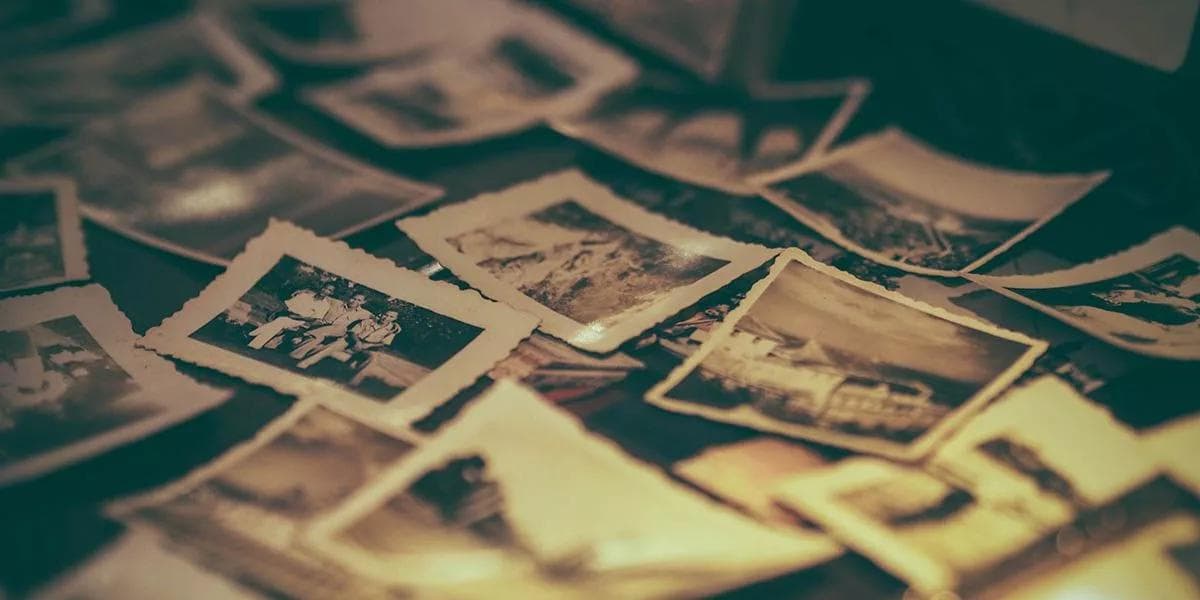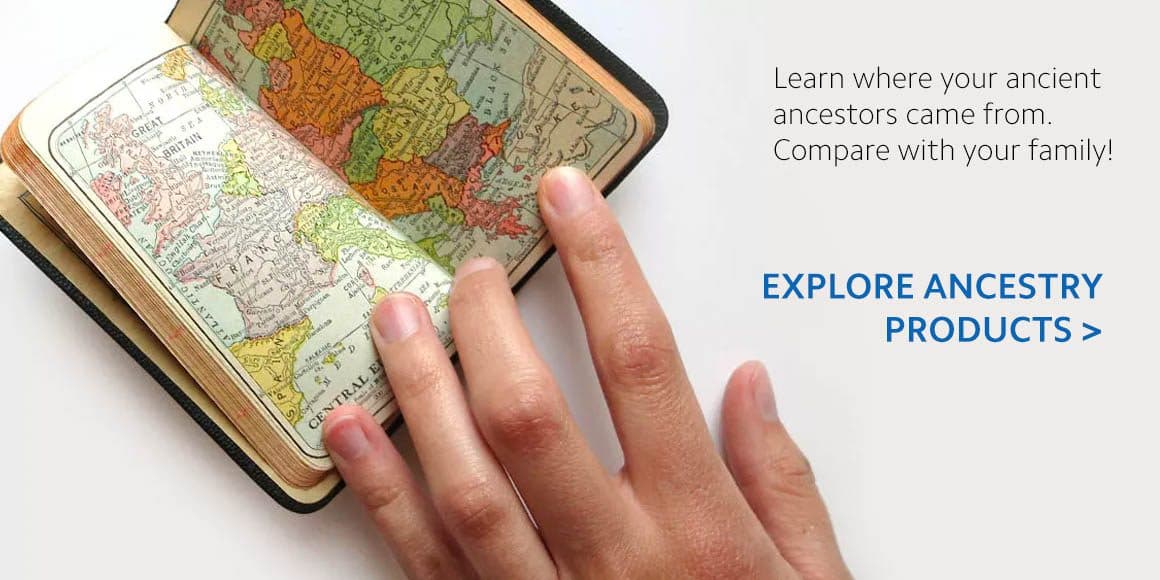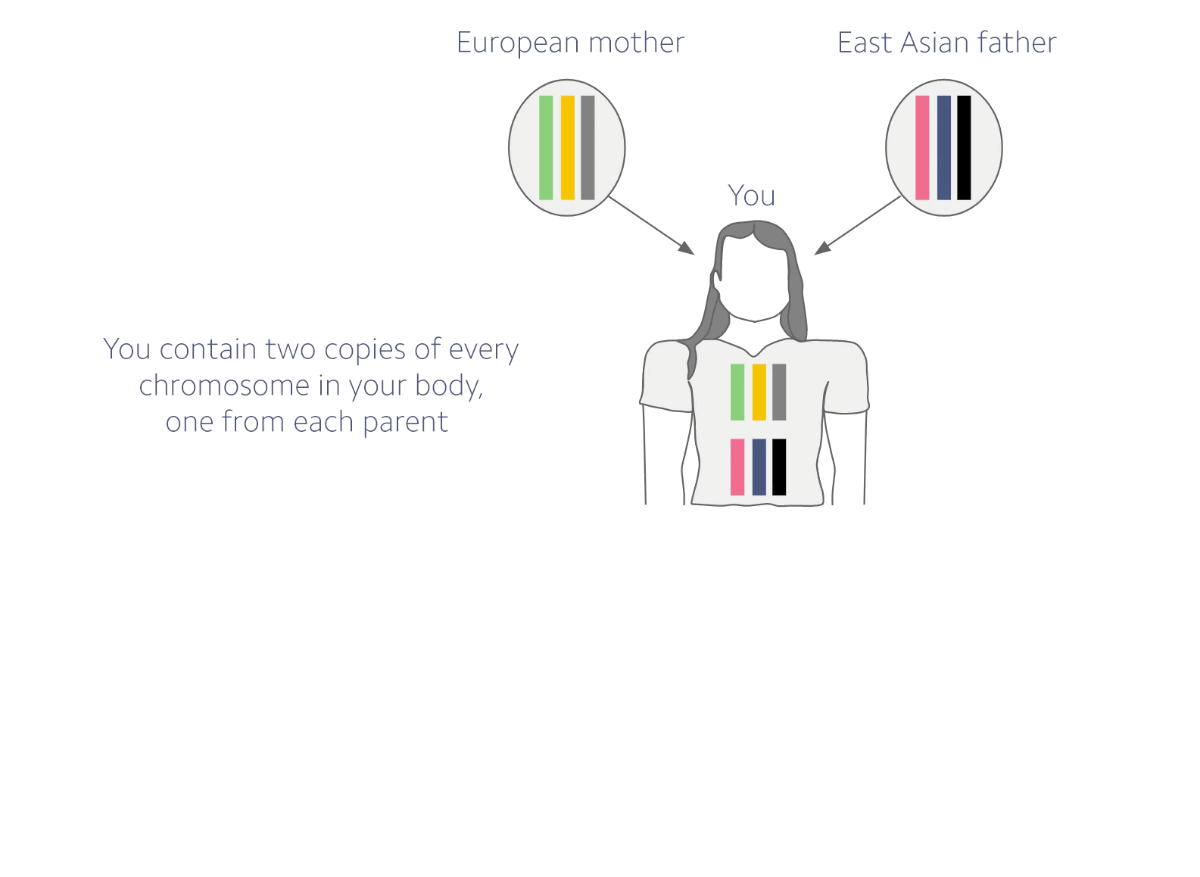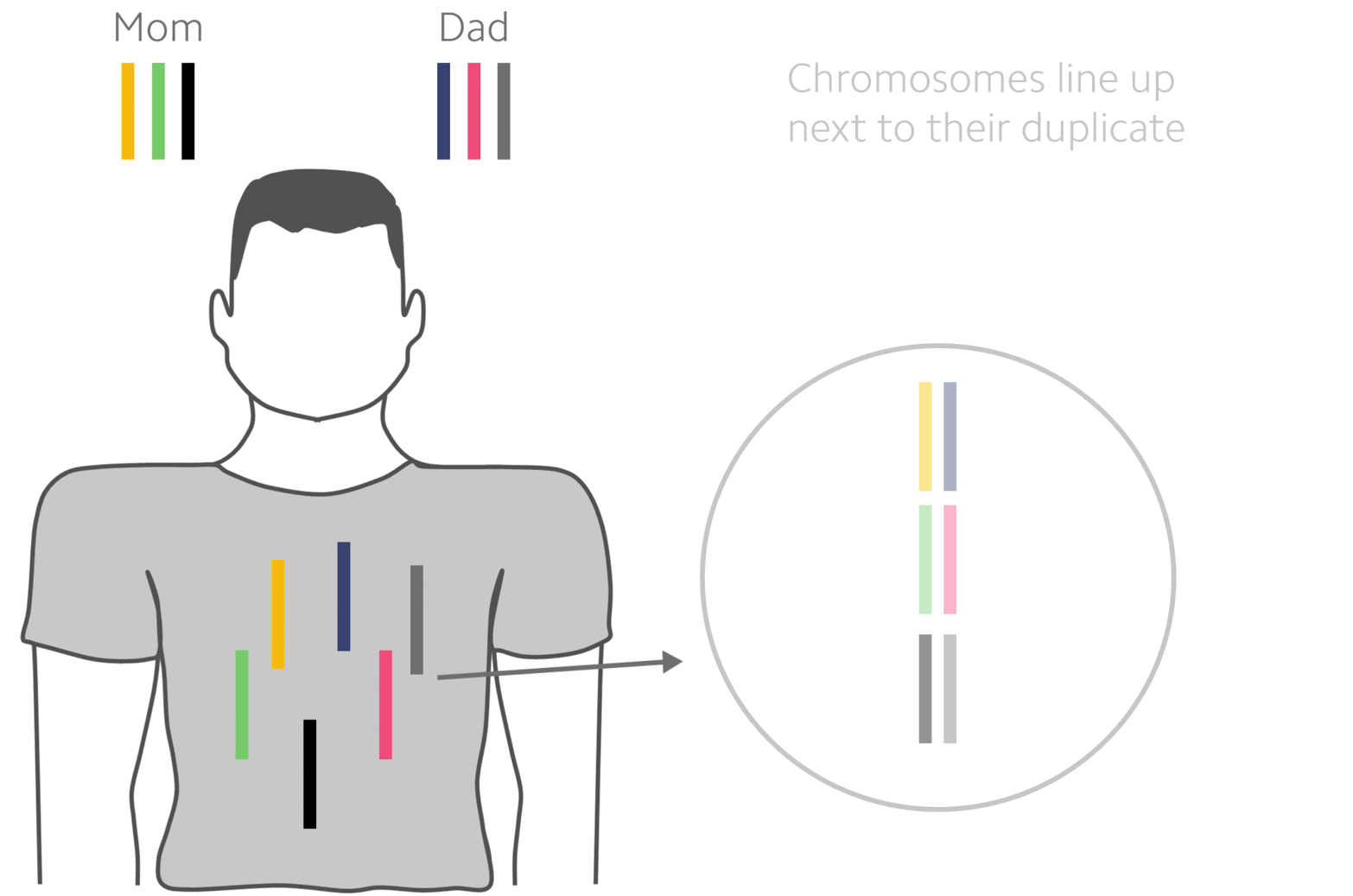How is your ancestry coded in DNA?

There’s a rich history packaged in nearly every cell of your body. Within the 3.2 billion letters of your DNA is a long trail of clues that collectively tell the story of how you came to be. But DNA is only comprised of four letters—A, C, G, and T—so how can that be enough to tell you about your ancestors?
The human genome encompases all of the DNA within each of your cells. You’ll sometimes see the genome compared to a book because it’s made of billions of letters which are strung together into coded messages, much like the letters of a book forming words. These messages serve as blueprints for building the human body. Because your DNA is where all of the instructions for life are stored, it gets passed on from generation to generation—and therefore it is through this DNA that we can find clues as to where those previous generations may have lived.
Marks in the DNA give us ancestry clues
If we think of your genome as a book, then your genome is just the most recent in a long series of sequential reprints. Each generation copies the book, and each time there are little changes that are made throughout the book. These little changes—or variants, as geneticists refer to them—often have no impact on our being. The changes that are made may become more common within people living in a certain part of the world, because they are more likely to reproduce with one another and pass those changes on. By looking for these unique aspects to the stories in your DNA, we’re able to calculate the likelihood that it came from a specific part of the world.
A good example of this is the specific DNA sequence near the LCT gene. A change of just one nucleotide in this portion of the DNA is associated with the ability to drink milk as an adult (also known as lactase persistence). This variant is typically found in people of Northern European descent and likely arose as ancient peoples migrated north from Africa into Europe. There are other similar variants that lead to lactase persistence in people of non-European descent. Because these variants become prevalent in certain groups, the presence of such variants can provide clues about a person’s ancestry.
Our DNA is organized into chromosomes. With few exceptions, we all have 46 chromosomes in our genome. More specifically, we have 23 pairs of chromosomes. Each of these pairs carries unique genetic information on it, and you have two copies of all 23 chromosomes (one from each of your biological parents) with the only exception being your sex chromosomes. If you think of chromosomes as each representing a chapter in a book, you have two copies of all 23 chapters in your book (23 written by one parent, and 23 written by the other). When it comes time to pass genetic information off to your future children, your body will segregate these chapters so that your sperm or egg cells only have one copy of all 23 chapters. Whether your body chooses the chapter written by your biological mother or your biological father is random; the sperm or egg cell may get chapters 1, 4, and 17 through 23 from dad and the rest from mom, or it may get a completely different combination (it could even get none from one of the parents!). This random selection is generally referred to as chromosome segregation.


Chromosome segregation in action. Notice how the chromosomes (represented by the colored bars) from each parent do not travel together but are actually split among the grandchildren.
Recombination refers to the trading of DNA between chromosome pairs. If we return to the book analogy, recombination would be similar to swapping one page in dad’s Chapter 1, with its respective page in mom’s Chapter 1. In essence, recombination moves DNA between chromosome pairs so that the chromosome you originally inherited from your biological mother now has some DNA in it from your biological father (and vice versa).

Recombination occurs as your body is making sperm or egg cells. After trading segments of DNA between the chromosomes, they will be separated through chromosome segregation.
The concepts of chromosome segregation and recombination are absolutely critical to understanding how ancestry is passed down and traced among generations because your DNA sequence carries unique segments from many parts of the world. Your biological father may have many one version in his DNA that is common to India, while your mother may have had another version in her DNA that is most common in people from Northern China. Which ancestry you pass on through your genetics to future children is determined by chromosome segregation and recombination.
These concepts are critical to understanding ancestry
So, when you send your DNA away to be analyzed for genetic ancestry, scientists are looking for what versions of these segments you’ve inherited. They look at the DNA in specific locations where we know there are likely to be region-specific details. Based on these sequences, we’re able to calculate the likelihood that your ancestors lived in various parts of the world. These tests can be extremely accurate, but they’re only as good as current research allows them to be. Scientists are still learning a lot about the human genome and need to build sequencing databases that are more diverse. By building diverse databases, we’ll be able to learn and identify where the stories in your DNA came from with even more specificity.
Ultimately, your genetic ancestry is just one part of your story. We don’t just pass on genetic material—we pass on family traditions, culture, and environments as well. Ancestry tests are meant to be a tool to help you build a more complete picture of your history, and with Helix, it’s easier than ever to do that.